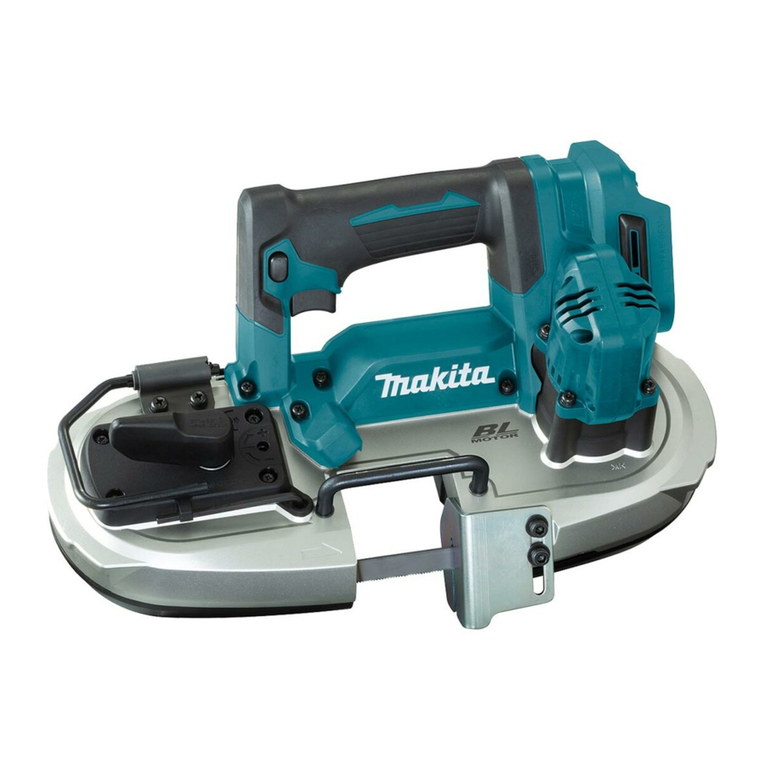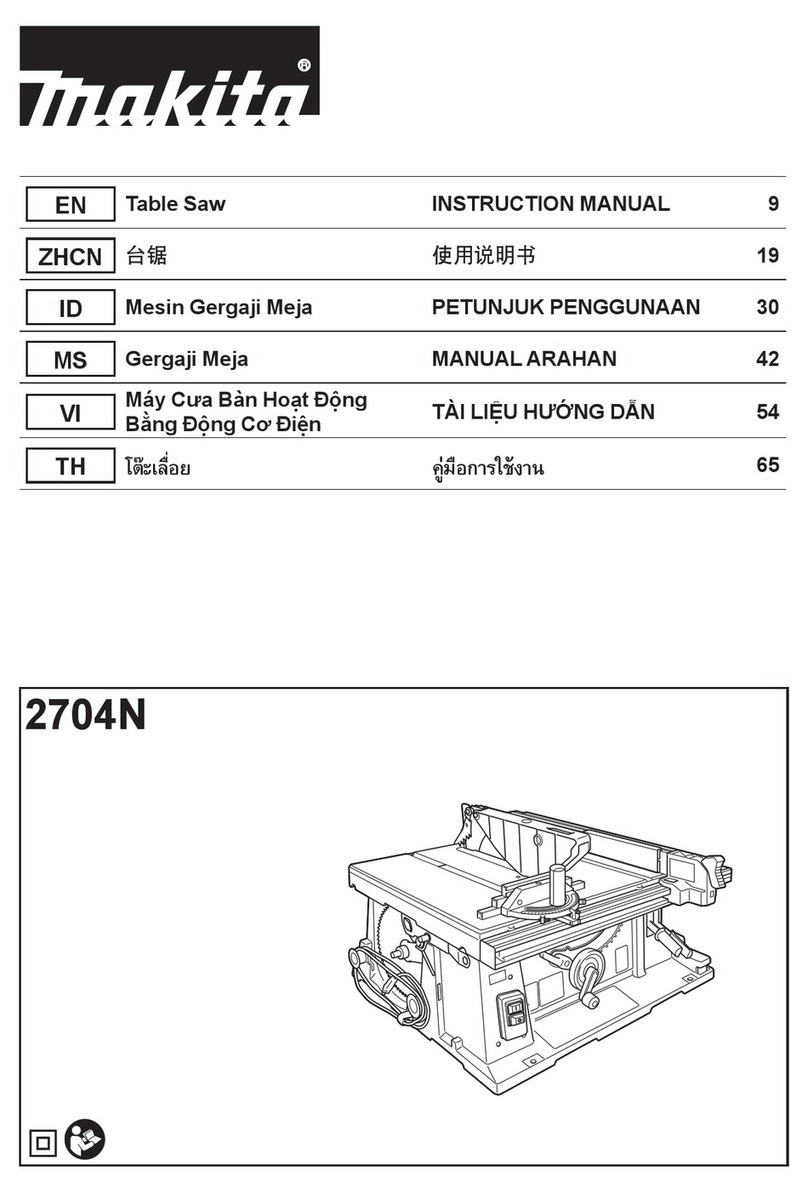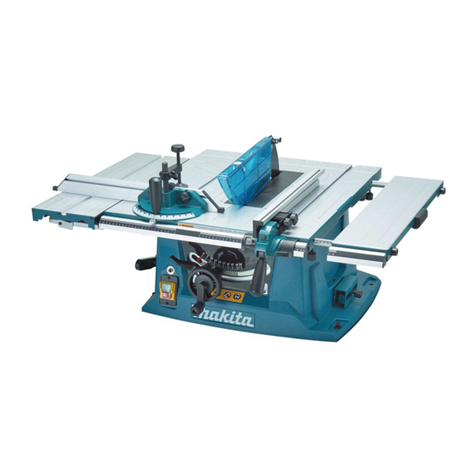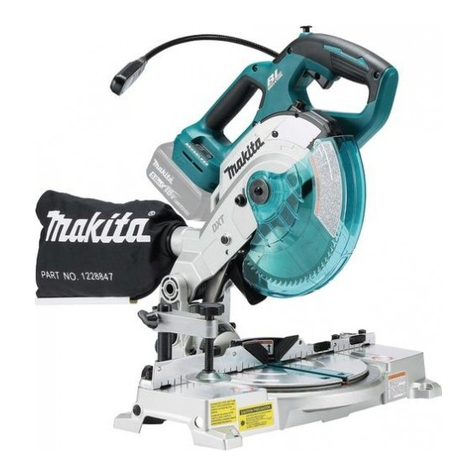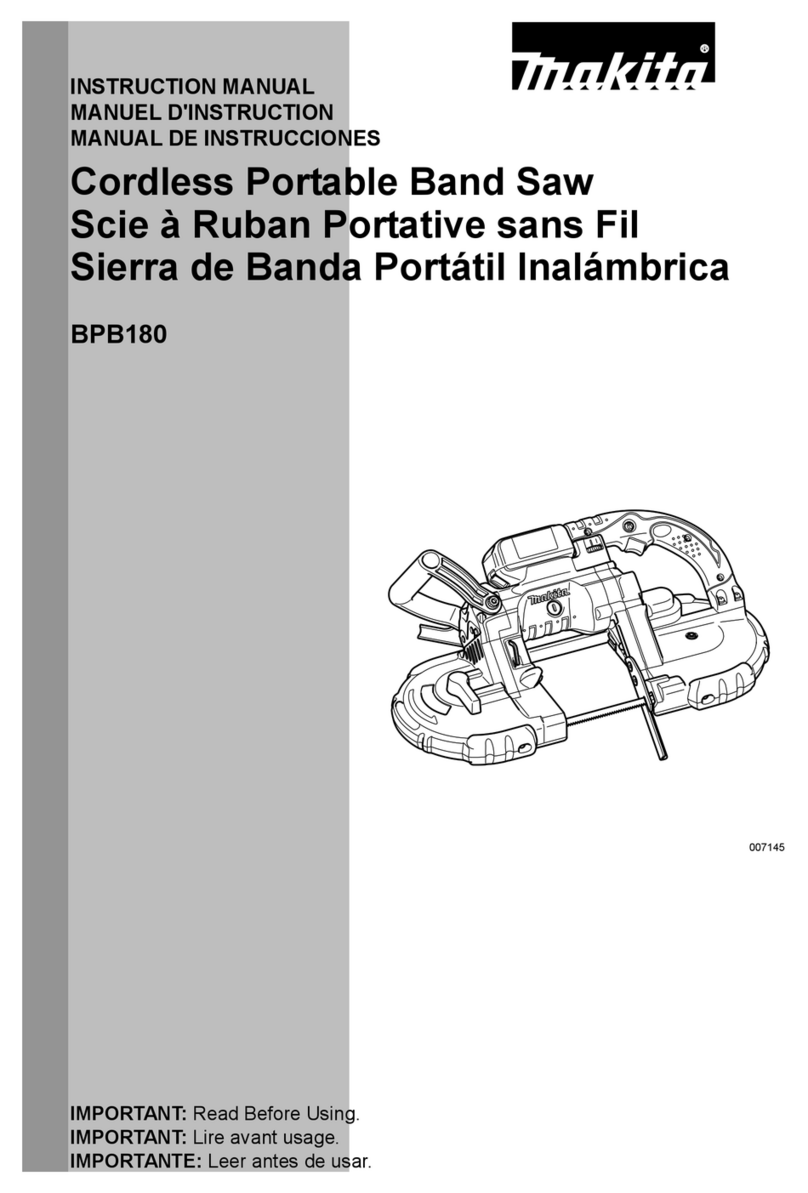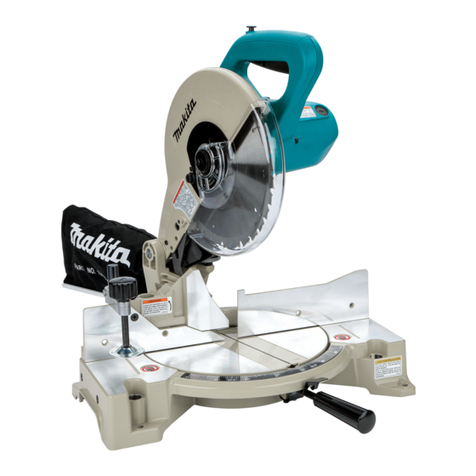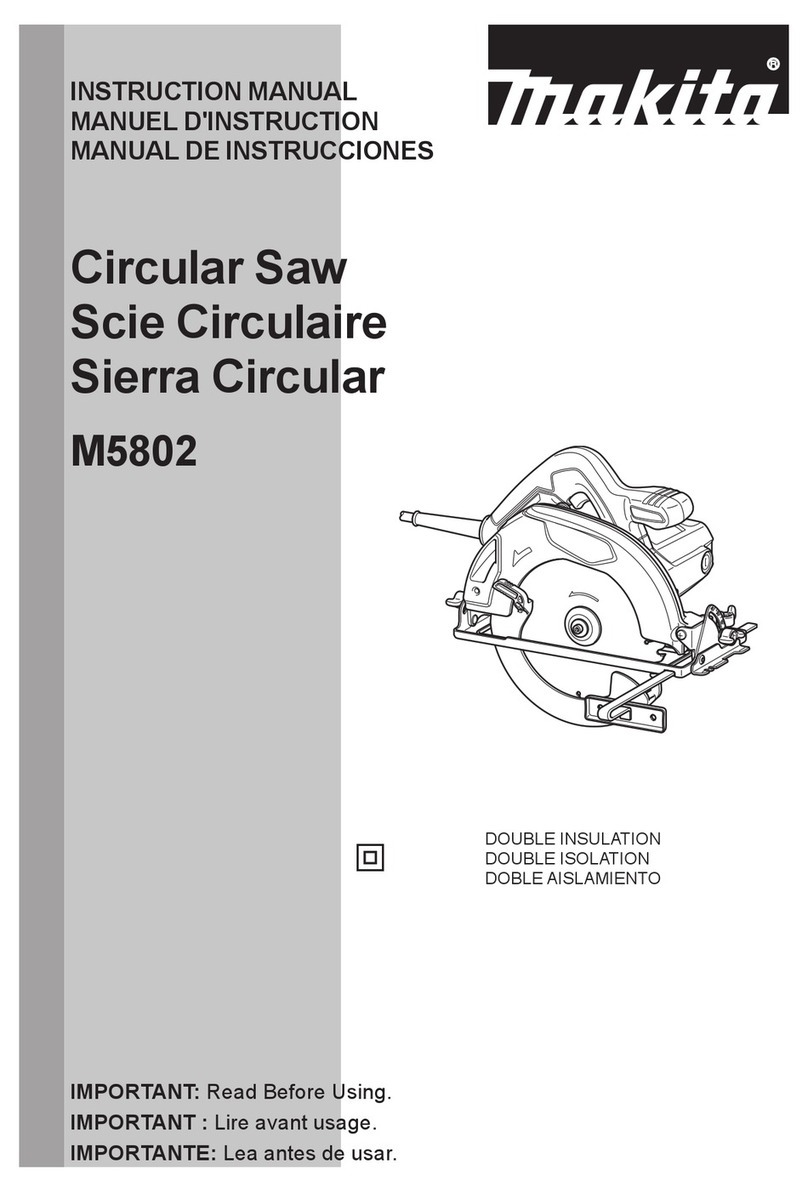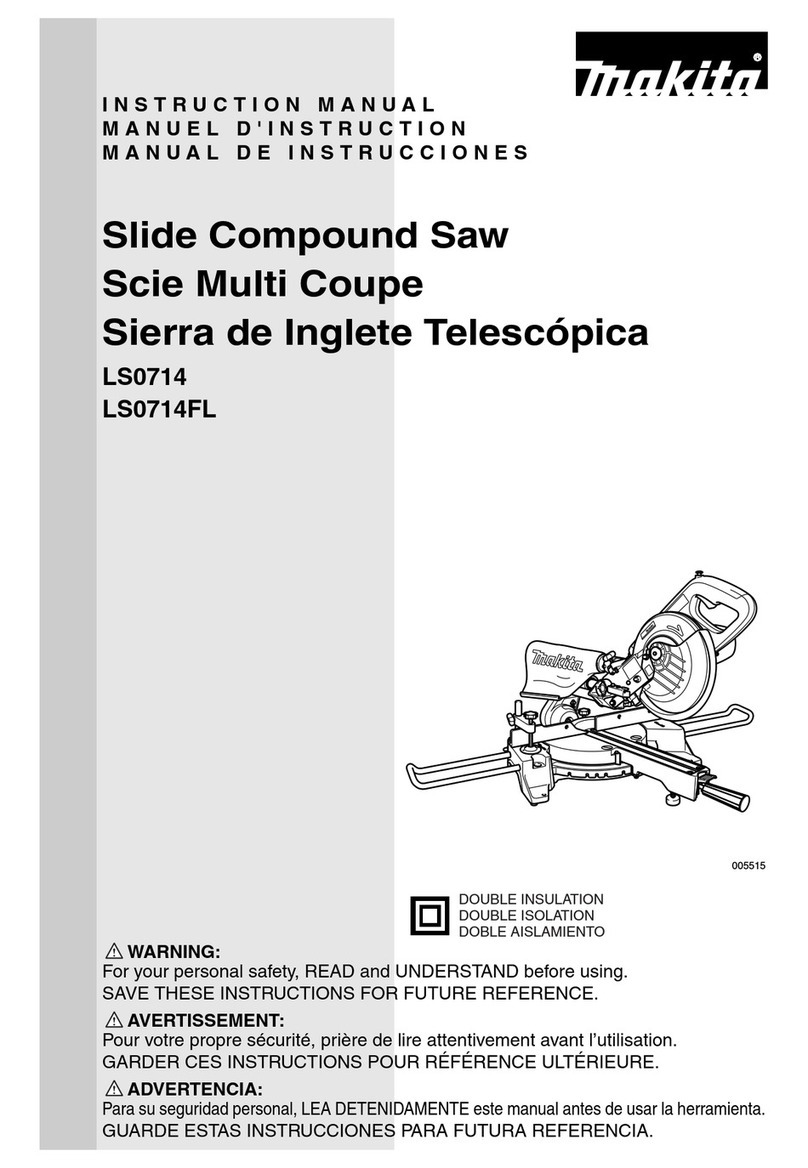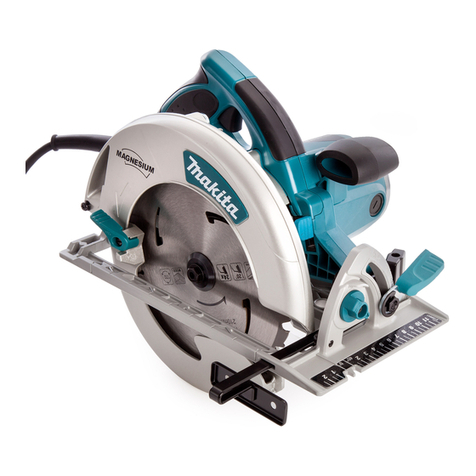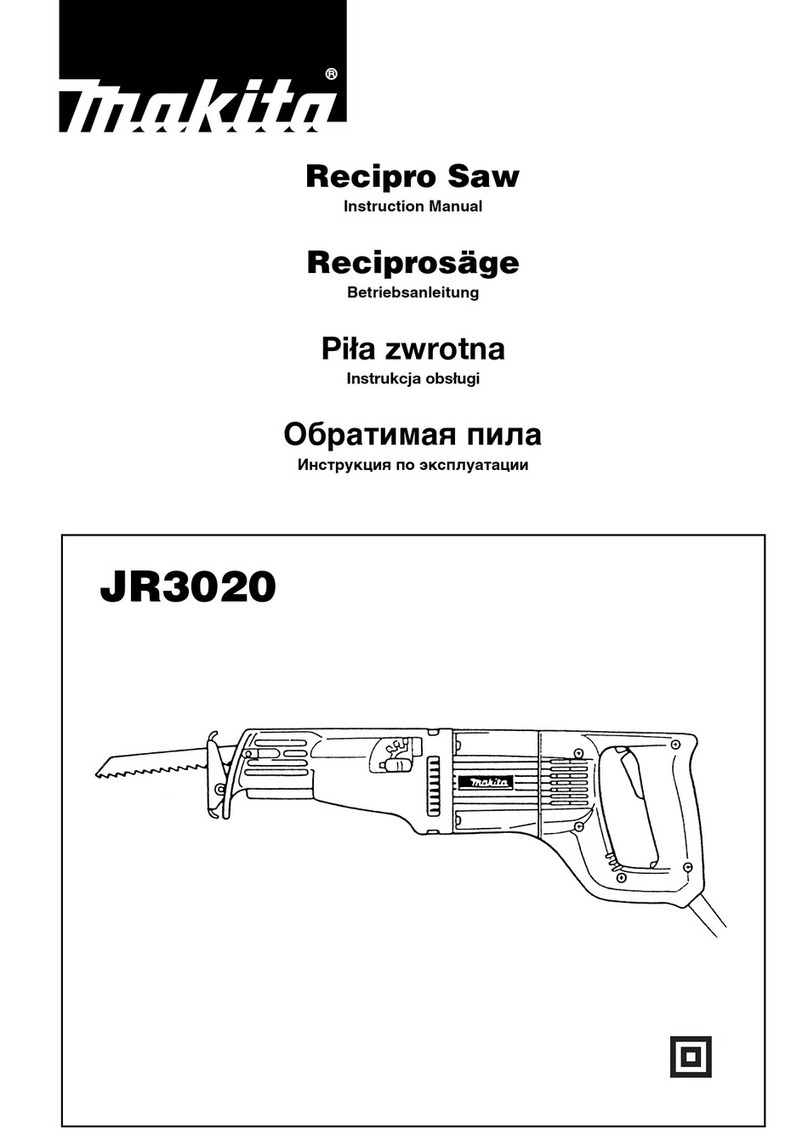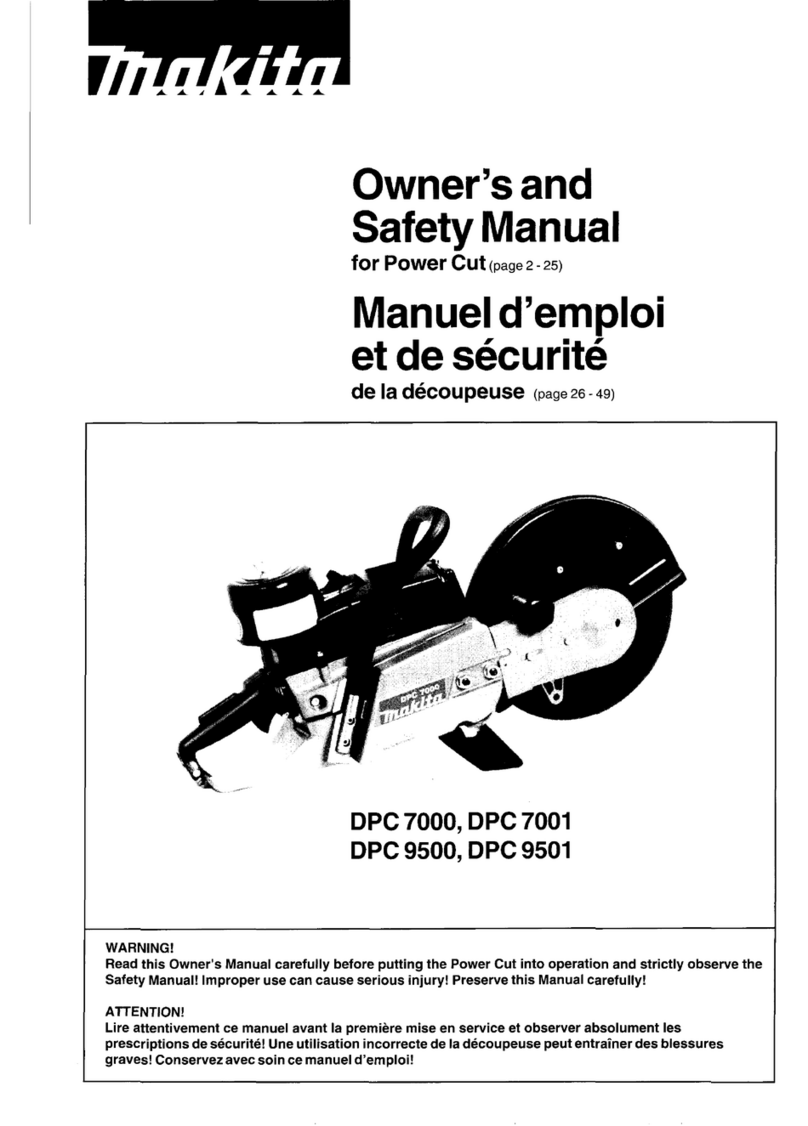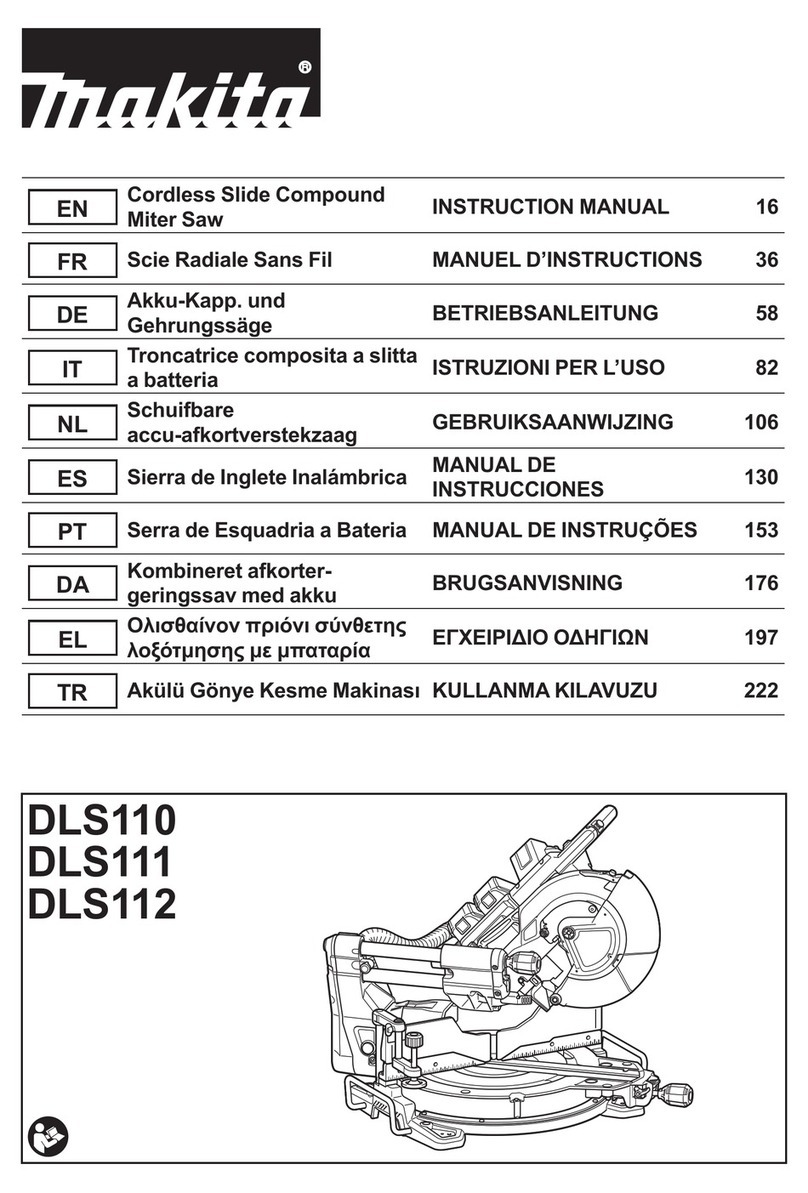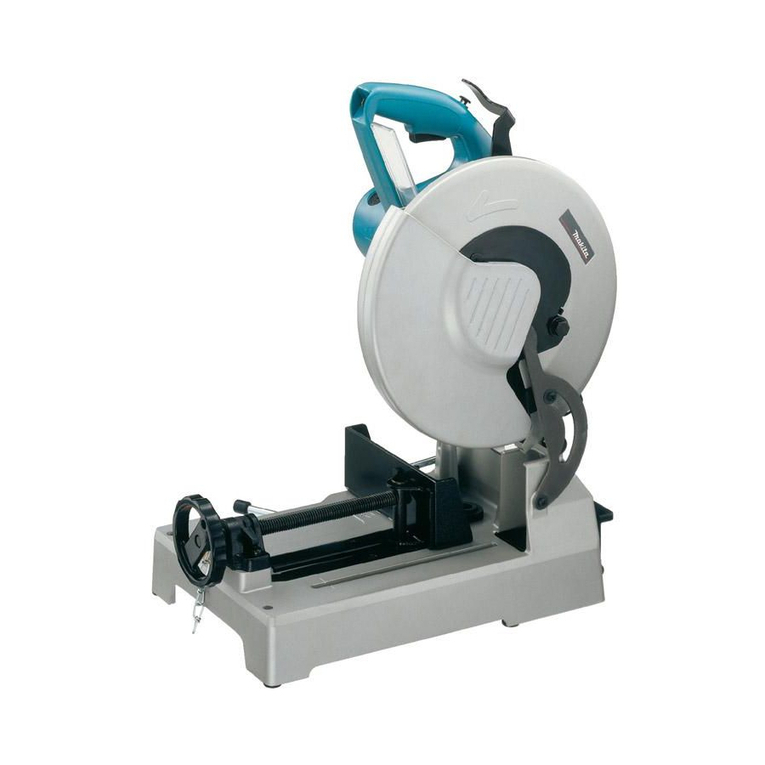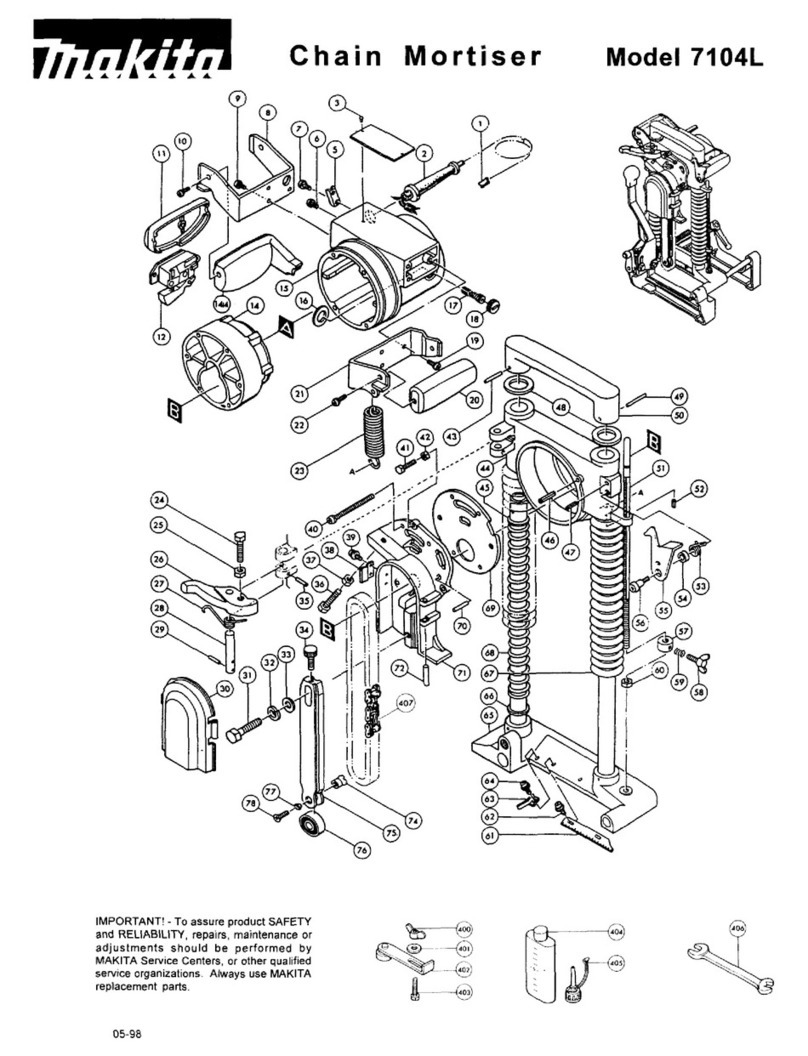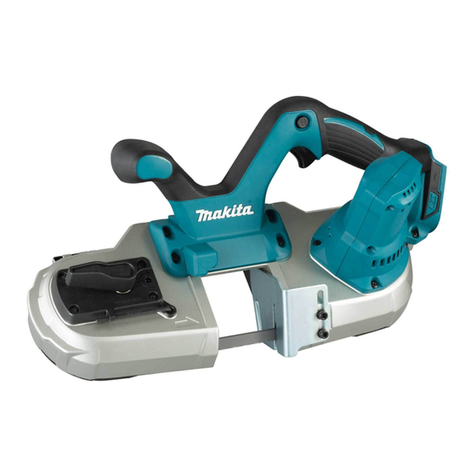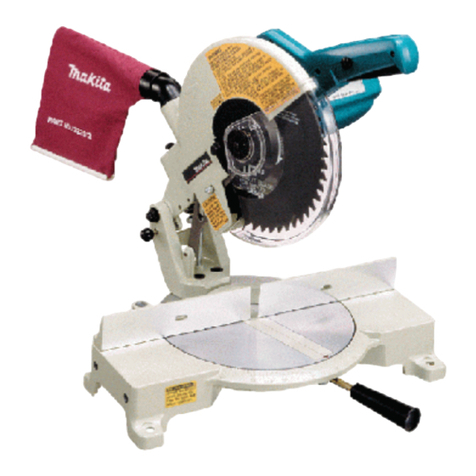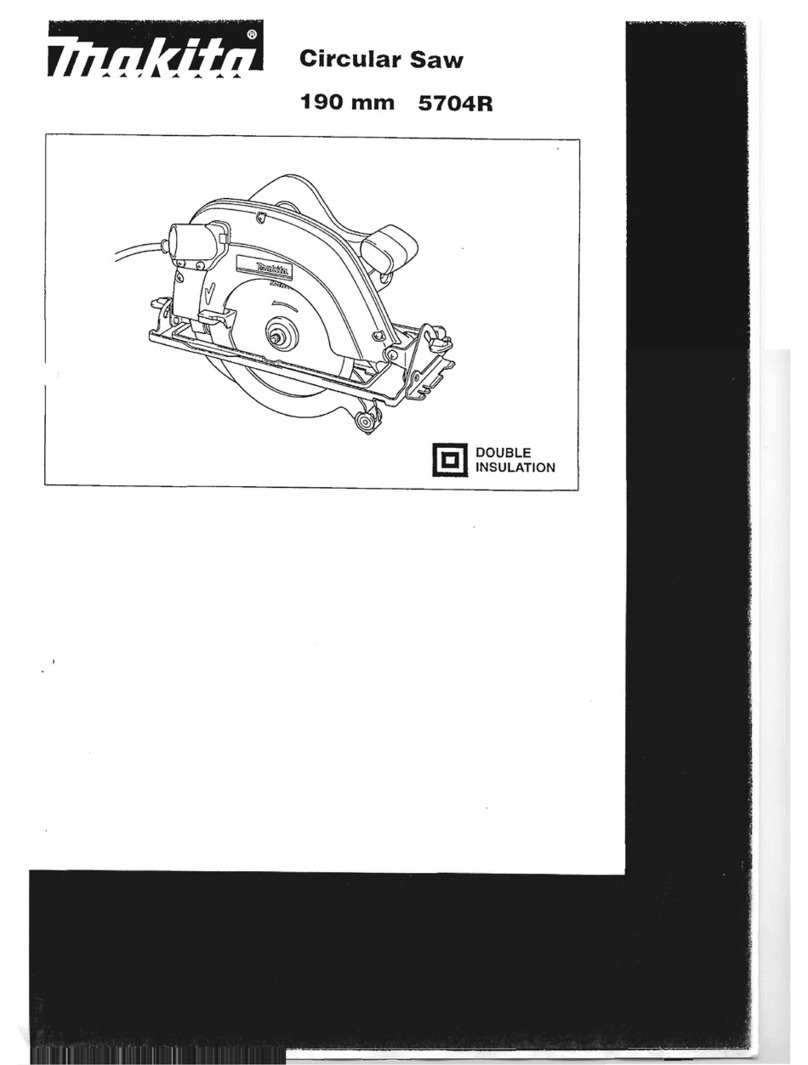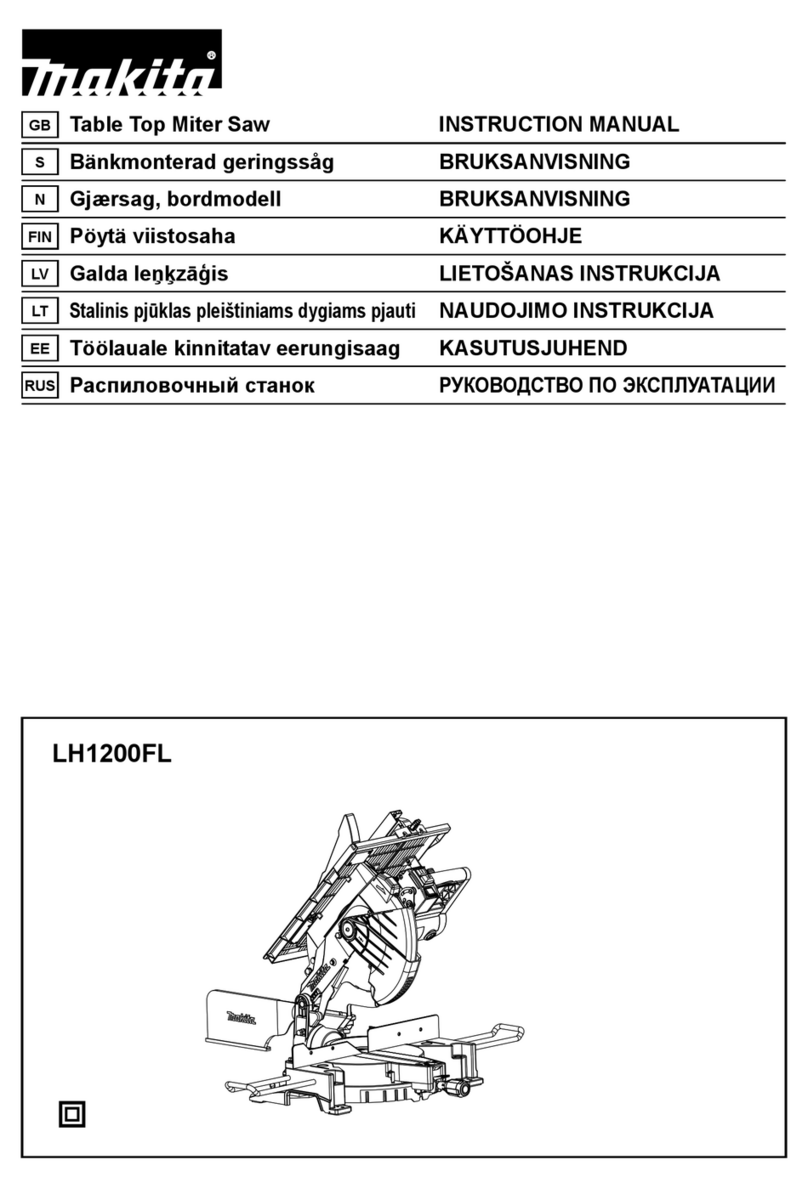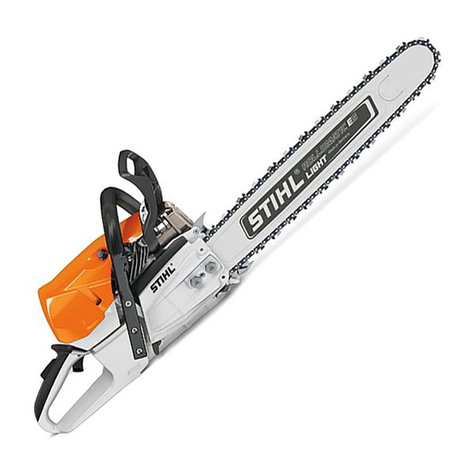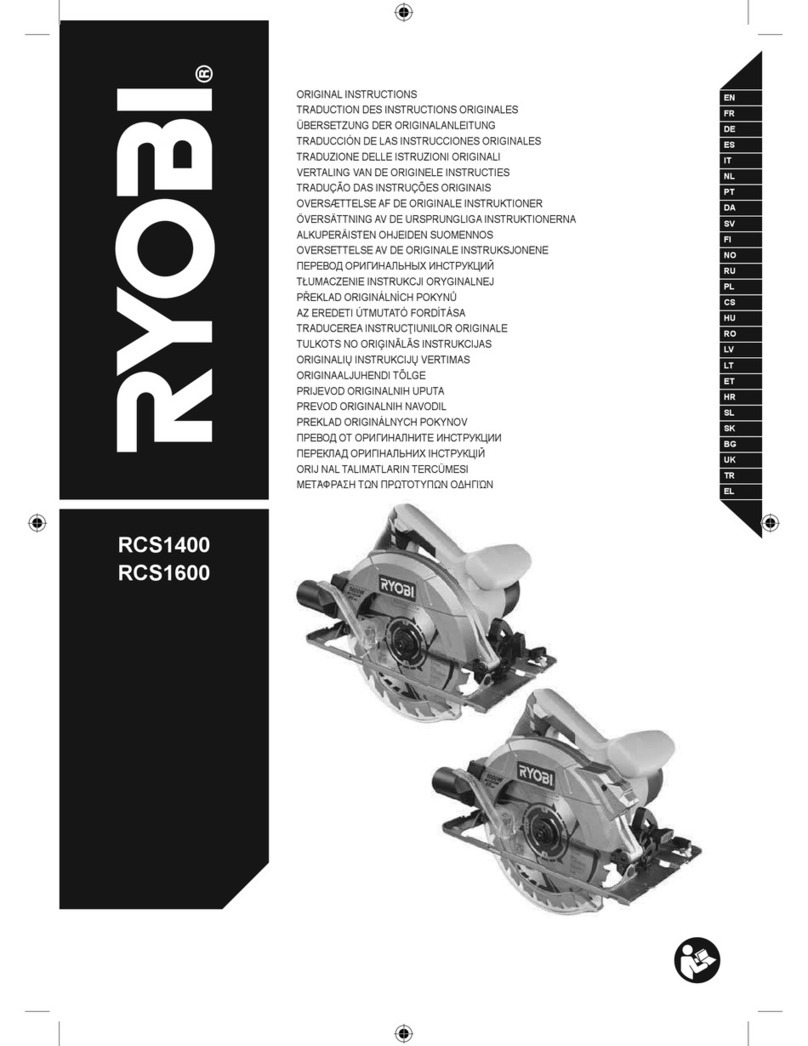
5ENGLISH
12. Secure work.
Use clamps or a vice to hold the work. It is safer
thanusingyourhandanditfreesbothhandsto
operate the tool.
13. Do not overreach.
Keepproperfootingandbalanceatalltimes.
14. Maintain tools with care.
Keepcuttingtoolssharpandcleanforbetterand
saferperformance.Followinstructionsforlubrica-
tion and changing accessories. Inspect tool cord
periodicallyandifdamagedhaveitrepairedbyan
authorized service facility. Inspect extension cords
periodically and replace, if damaged. Keep han-
dles dry, clean and free from oil and grease.
15. Disconnect tools.
Whennotinuse,beforeservicingandwhen
changingaccessoriessuchasblades,bitsand
cutters.
16. Remove adjusting keys and wrenches.
Formthehabitofcheckingtoseethatkeysand
adjustingwrenchesareremovedfromthetool
beforeturningiton.
17. Avoid unintentional starting.
Donotcarryaplugged-intoolwithangeronthe
switch.Ensureswitchisowhenpluggingin.
18. Use outdoor extension leads.
When tool is used outdoors, use only extension
cords intended for outdoor use.
19. Stay alert.
Watch what you are doing. Use common sense.
Do not operate tool when you are tired.
20. Check damaged parts.
Before further use of the tool, a guard or other part
thatisdamagedshouldbecarefullycheckedto
determine that it will operate properly and perform
its intended function. Check for alignment of mov-
ingparts,freerunningofmovingparts,breakage
of parts, mounting and any other conditions that
mayaectitsoperation.Aguardorotherpart
thatisdamagedshouldbeproperlyrepairedor
replacedbyanauthorizedservicecenterunless
otherwise indicated in this instruction manual.
Havedefectiveswitchesreplacedbyanautho-
rized service facility. Do not use the tool if the
switchdoesnotturnitonando.
21. Warning.
The use of any accessory or attachment, other
than those recommended in this instruction man-
ual or the catalog, may present a risk of personal
injury.
22. Have your tool repaired by a qualied person.
This electric tool is in accordance with the relevant
safetyrequirements.Repairsshouldonlybecar-
riedoutbyqualiedpersonsusingoriginalspare
parts,otherwisethismayresultinconsiderable
danger to the user.
23. Use of power supply via an RCD with a rated
residual current of 30 mA or less is always
recommended.
ADDITIONAL SAFETY RULES FOR
TOOL
1. Wear hearing protection.
2. Keep Guards In Place and In Working Order.
Never wedge or tie lower guard open. Check
operation of lower guard before each use.
Don’t use if lower guard does not close briskly
over saw blade.
CAUTION: If saw is dropped, lower guard may
be bent, restricting full return.
3. Do not use blades which are deformed or
cracked.
4. Do not use blades made of high speed steel.
5. Do not stop the blades by lateral pressure on
the saw blade.
6. Keep Blades Clean and Sharp. Sharp blades
minimize stalling and kickback.
7. DANGER:
Keep Hands Away From Cutting Area.
Keep hands away from blades. Don’t reach
underneath work while blade is rotating. Don’t
attempt to remove cut material when blade is
moving.
CAUTION: Blades coast after turn o.
8. Support Large Panels (Fig. 1 & 2).
Large panels must be supported as shown in
Fig. 1 to minimize the risk of blade pinching
and kickback.
When cutting operation requires the resting
of the saw on the workpiece, the saw shall be
rested on the larger portion and the smaller
piece cut o.
Fig. 1
Toavoidkickback,dosupportboardorpanelnearthe
cut.
Fig. 2
Donotsupportboardorpanelawayfromthecut.
9. Use Rip Fence.
Always use a fence or straight edge guide
when ripping.
